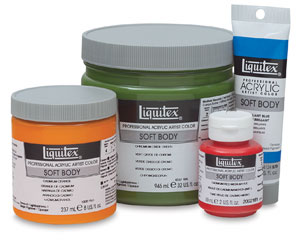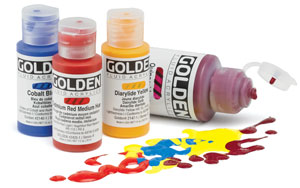Painting a mural with acrylics
Reader Question: I am a student in need of some information about murals, or examples of them. I also wanted to know what type of paint to use for one. I have two offers for me to do them but I have never done anything like that. I am a very good artist; I'm really good with watercolors and drawing, but I need a little bit more info about painting a wall. One will be a painting of a car and it will be painted on a brick wall. The other is my choice but it has to be about a lake.
The Recommended Products below are there to help you browse for art supplies, and if you make a purchase I get a small commission that supports this site and keeps it FREE! Thanks in advance.
The best paint to use for murals is acrylics. For underpaintings, you can use latex paint (a.k.a. interior household paint), which will save you some money because latex paint is cheaper than artist quality acrylics and gets better coverage. For the detailed work, you should use high-quality acrylics, like Liquitex Soft Body Acrylics, Liquitex Heavy Body Acrylics, or Golden Fluid Acrylics (a good choice for painting on bricks, especially when mixed with GAC 200, an acrylic polymer that increases film hardness and durability). You can also mix the Fluid Acrylics with the Heavy Body acrylics to create paint that is suitable for covering large areas. I've also compiled a list of paint and other materials you'll need to paint a mural.
Depending on the style of mural you will be doing, you may be able to transfer a lot of your painting knowledge over to mural painting. However there are some handy mural painting techniques, like sponging, stippling and stenciling, that might come in handy as you paint your mural.
Tips and techniques for painting a mural on a brick wall:
First you'll need to clean the brick wall. This is an important step if you want the mural to look its best and last a long time. To do this, wet the wall with water. Fill a bucket with cleaning solution (a regular household cleaner will do, or you can use TSP). Use a stiff brush to scrub the walls. When you've finished scrubbing, rinse the wall with clean water and let the bricks dry before the next step.
After the bricks are dry, prime the brick wall with a masonry or brick primer. You can ask for this at your local home improvement / DIY store (like Home Depot or Lowes). Tell them you are going to paint a mural on a brick wall and you need the right primer for it. Primer is important because it will prepare the wall to accept paint, making it easier for the paint to adhere to the brick wall.
After the primer has dried, the wall is ready for you to draw your outline on it using chalk or pastel. If you need to accurately blow up your sketch or reference photo, you can use the grid method or an art projector. When painting on bricks, it can be hard to achieve tight detail, so you should try to make your design as simple as possible with broad, flat areas of color.
To paint the mural, use chip brushes rather than the paintbrushes you usually use for fine art painting. The texture of the bricks will wear out brushes very quickly, so you don't want to waste your good paintbrushes by painting a brick wall. Chip brushes are very inexpensive so you can get a lot of them and throw them out after they get too worn out to use. You can also get these at a home improvement / DIY store.
If the brick wall is outside, be aware that climate conditions can quickly weather an outdoor mural. Use acrylic paints that have a high lightfastness rating (you can check the label of the paints for this). In general, avoid using Cadmium colors (like Cadmium Red, Cadmium Yellow, etc) because they will fade quickly if painted outdoors.
If you make a purchase via the links below I receive a small commission, which helps support this site.
After the mural is finished, you will need to seal the mural to protect it from the elements. It is recommended that you use two coats: the first coat should be an isolation barrier, such as Golden Soft Gel Gloss or Liquitex Matte Medium. This isolates the paint layers from the varnish, so that if the varnish needs to be removed to clean the mural, the removal process won't accidentally lift off the paint as well. For the final coat of varnish, I'd recommend using Golden MSA Acrylic Varnish, a removable varnish available in satin, gloss and matte finishes, suitable for both interior and exterior use.
Hope that helps and best of luck with your murals!










